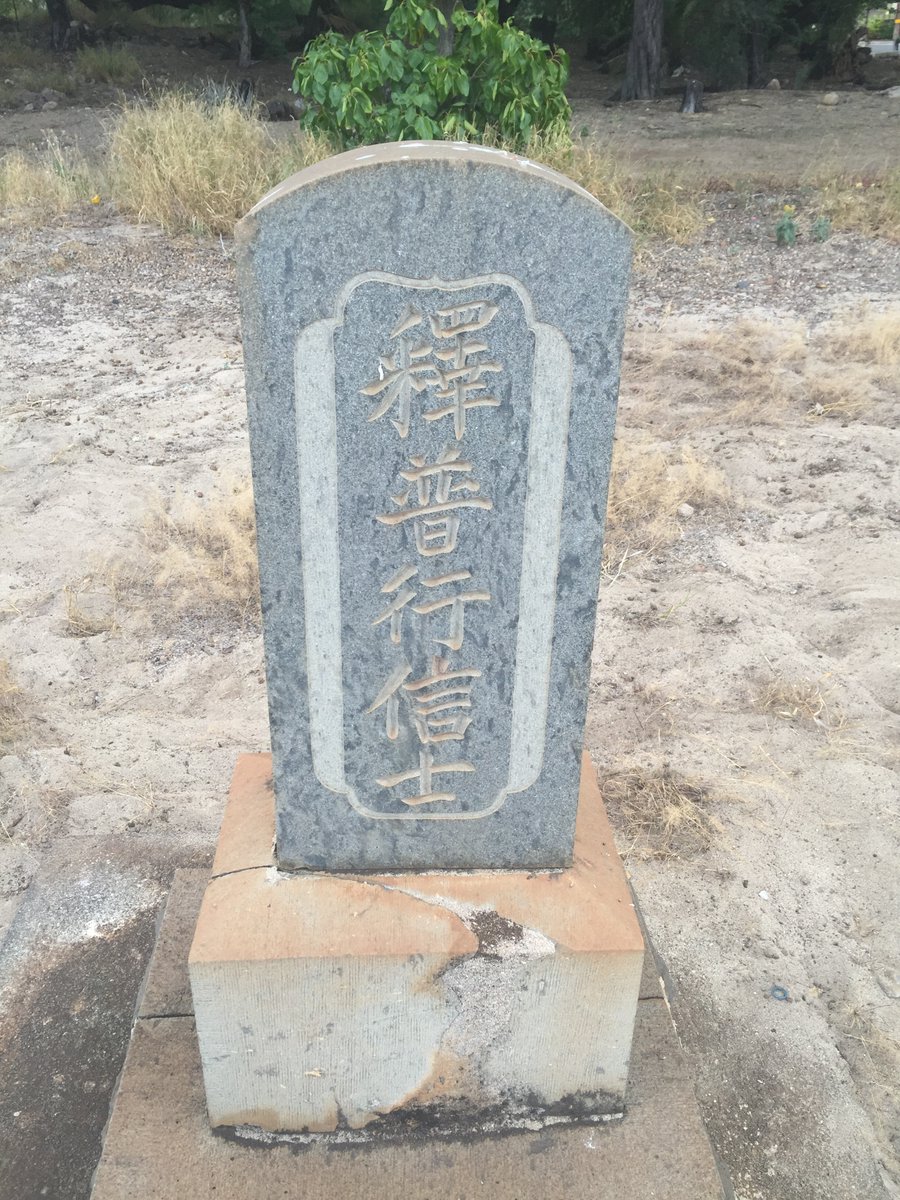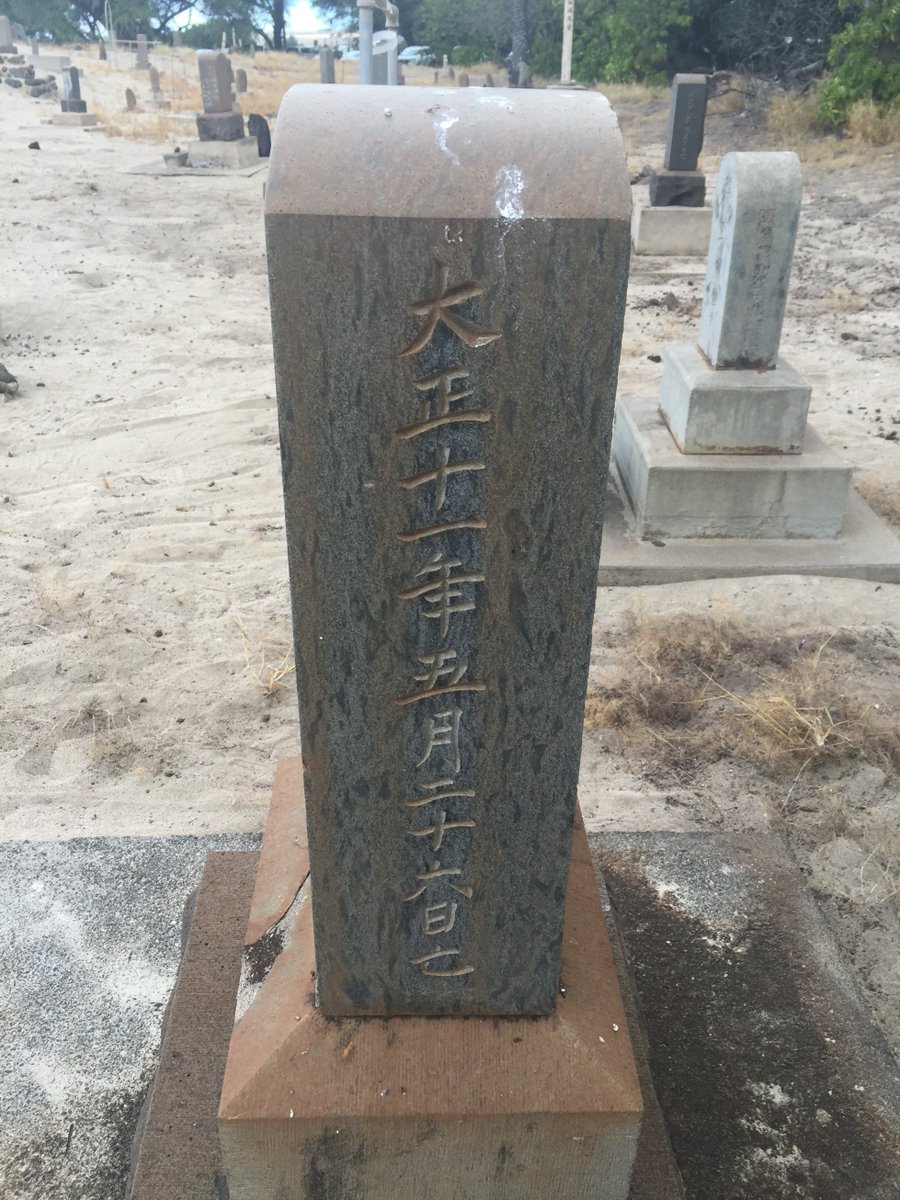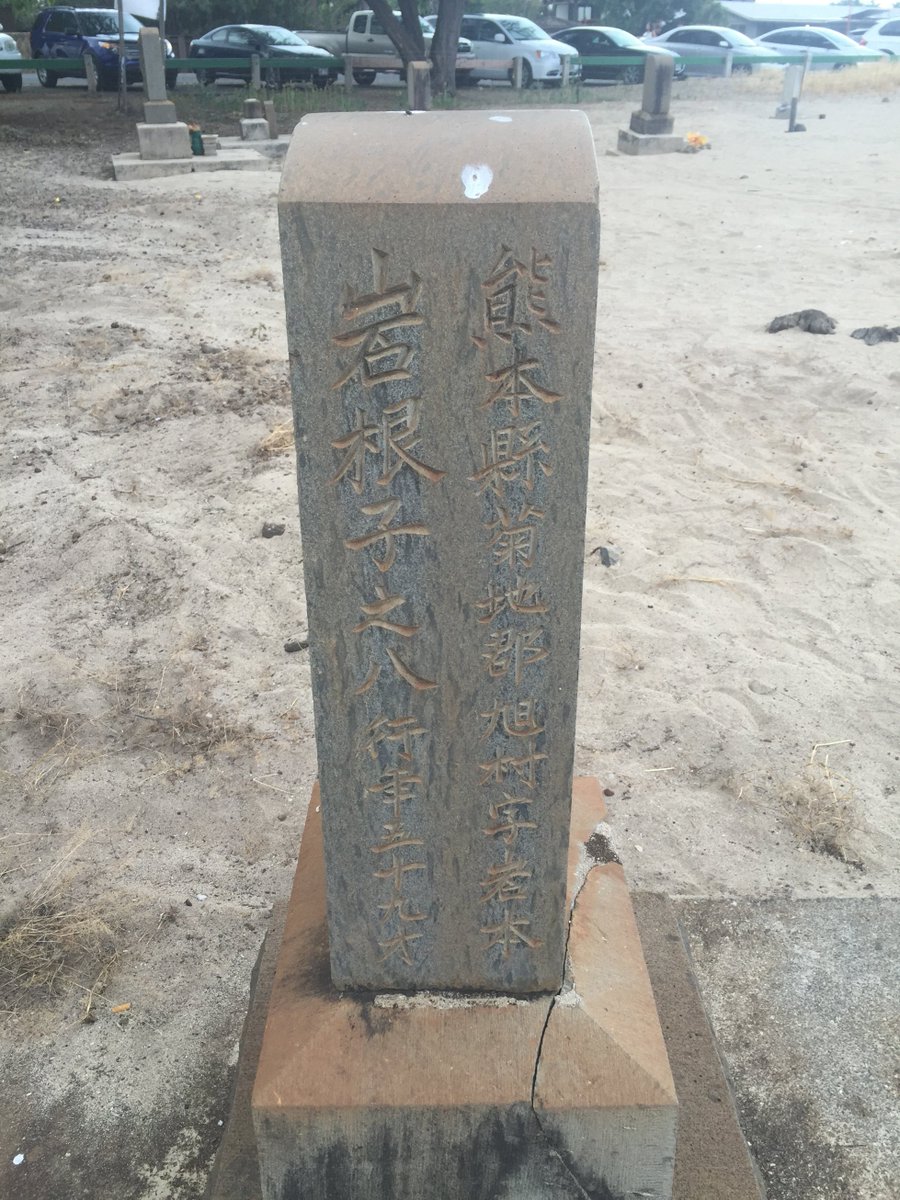This is a thread on the characteristics of Japanese grave markers in Hawaiʻi. Although Japanese grave markers vary in information and style, a large number from the 1890s-1930s share similarities that I will go into here.
The grave in the above photo is of Nenohachi Iwane, who died on 26 May 1922 and was buried in Puʻupiha Cemetery in Lahaina. The Japanese text on the front of the marker is the deceased& #39;s Buddhist dharma or precept name - called hōmyō (法名) or kaimyō (戒名) depending on the sect.
Nenohachi& #39;s Buddhist name, 釋普行信士 (Shaku Fu Gyō Shin Shi), gives no clue to his secular name, which was carved instead on the side of the marker. Unfortunately, I& #39;ve seen a number of unknown memorials on Find A Grave with photos of only the front of these types of markers.
Carved on the right of the marker is Nenohachi& #39;s death date. The carving, 大正十一年五月二十六日亡, means "died on the 26th day of the 5th month of the 11th year of Taishō", or when converted to the Gregorian calendar, 26 May 1922.
Japanese dates use the concept of "eras", which typically correspond with the reign of the Emperor (in this case, Taishō). 年 means "year", 月 means "month", and 日 means "day".
On the left of the marker carries the individual& #39;s name and age at death. Going down, we read 岩根子之八行年五十九才 (Iwane Nenohachi, aged 59 years). In Japanese custom, his family name is written before his given name.
Carved on the right column going down is 熊本縣菊池郡旭村字岩本 (Iwamoto section, Asahi village, Kikuchi District, Kumamoto Prefecture), Nenohachi& #39;s place of origin. This information, contained on nearly all Japanese graves of this period, is especially useful when researching.
Columns listing the individual& #39;s place of origin are written from the largest jurisdiction down to the smallest, the opposite of what we& #39;re used to in the West. The largest jurisdiction is the prefecture [縣 or 県 (ken)], which are similar to states here in the US.
Prefectures contain both districts [郡 (gun)], which are similar to US counties, and cities [市 (shi)]. Districts contain towns [町 (chō/machi)] or villages [村 (mura)] while cities are made up of wards [区 (ku)].
Sections [字 (aza); or 大字 (ōaza) if a large section] are the smallest unit and are found in villages, towns, and cities. These are not always included in place names and some may be somewhat obscure, only appearing in land surveys or cadastral maps.
Anyway, I know this information will be irrelevant to nearly everyone who reads this, so I hope this thread was at least educational/somewhat interesting. I hope to post more of these in-depth genealogy threads in the future.
Note: I reposted this thread after originally posting the wrong photo in the top post.

 Read on Twitter
Read on Twitter




